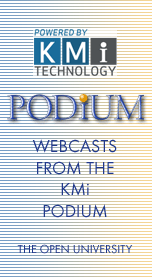
|
 |
This event took place on 6th November 2013 at 11:30am (11:30 GMT)
Knowledge Media Institute, Berrill Building, The Open University, Milton Keynes, United Kingdom, MK7 6AA

The question of how to evaluate the quality of research publications is very difficult to answer and despite decades of research, there is still no standard solution to this problem. Particularly at present, with the amount of scholarly literature rapidly expanding, it might become very difficult and time consuming to recognise what is the key research that presents the most important contributions to science. Furthermore, this question is highly relevant not only to researchers, but also librarians, publishers, editors and promotion and grant committees.
Currently, the most widely used methods for evaluating research publications are based mainly on citations. One of the crucial problems of this approach is the time delay between the date of publication and receiving the first citations. This delay complicates the process of finding recent relevant research. Moreover, citations included in a publication are based solely on the choice of the author and they don’t necessarily indicate the quality of the cited paper. There are also significant differences between citation patterns in different fields of science.
Within this area we are interested in finding new methods which use semantically richer information for assessing quality. An example of such information might include semantic similarity of publications and analysis of their full-text, citation network analysis, for example finding bridges between distinct clusters of publications, etc. Main goals of this research include evaluating how the measures based on citations represent the quality of a paper and designing new methods for measuring quality that will address the challenges in this area.
In this talk I am going to present my PhD research. I will provide an overview of the area of research evaluation and describe some new emerging methods for evaluating the quality of research publications, their advantages and drawbacks. |
The webcast was open to 100 users
|
 Click below to play the event (46 minutes) Click below to play the event (46 minutes) |
|
|

